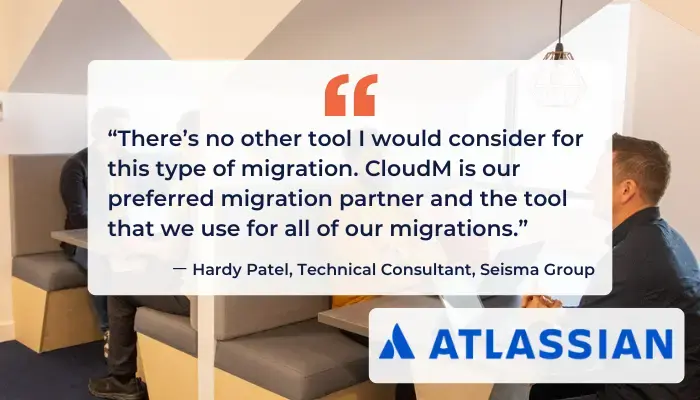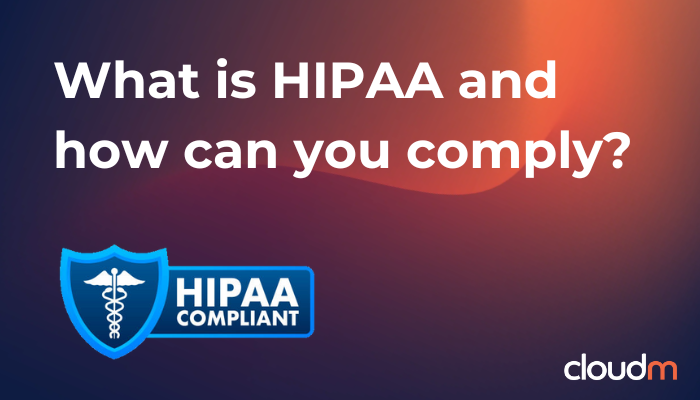The process of managing patient health data isn’t the same as it was a few years back. Records aren’t just stored in filing cabinets and on company devices anymore, they’re in the cloud.
The Health Insurance Portability and Accountability Act of 1996 (HIPAA) standardized how private health information (PHI) and electronic private health information (ePHI) is managed. The act details how organizations should keep patient information safe and secure, inside and outside healthcare practices.
If you deal with PHI or ePHI – whether that’s as a healthcare provider or a business working with healthcare providers – you need to comply with HIPAA rules. This guide gives you a whistlestop tour of HIPAA compliance requirements.
But before we dive into the details of how you can ensure you comply with HIPAA, let’s take a quick look at what’s at stake.
The cost of non-compliance
Failure to comply with HIPAA requirements can result in fines up to $68,928 per violation per year, civil lawsuits, and criminal charges.
Depending on the severity of the violation, HIPAA fines can seriously hurt an organization financially. But there’s more. If an organization is found to have been lax with keeping sensitive data safe, they will be the focus of public scrutiny which can severely damage the brand’s reputation and further hinder recovery and operations.
Let’s look at how you can avoid this by examining the rules and requirements of HIPAA.
HIPAA rules: an overview
The aim of HIPAA is to keep private health information, in all its forms, safe. For mandated organizations, this information must remain confidential both inside and outside healthcare facilities. If HIPAA rules are breached, organizations could face penalties ranging from a few hundred dollars to tens of thousands depending on the severity of the violation.
Private health information could include a patient’s medical conditions, the healthcare they receive, and payment for this care. It’s health data that’s individually identifiable for the patient.
There are five parts to HIPAA legislation, known as titles. Each section focuses on a different aspect of using healthcare data. Where the first title regulates group and individual health insurance policies, the second title establishes privacy and security standards for protected health information. Here’s the full list of titles:
- Healthcare access, portability, and renewability
- Preventing healthcare fraud and abuse, administrative simplification, and medical liability reform
- Tax-related health provisions governing medical savings accounts
- Application and enforcement of group health insurance requirements
- Revenue offsets governing tax deductions for employers
In the next section, we focus on the second title because this is where guidance on keeping ePHI secure can be found under the Security Rule.
HIPAA rules apply to two different groups: covered entities and business associates. Covered entities are organizations that provide treatment, healthcare plans, or deal in payments (healthcare clearinghouses). Business associates are companies working for covered entities that have access to PHI and ePHI – cloud storage companies, billing providers, and outsourced IT businesses. HIPAA compliance requirements for the Security Rule vary slightly between these two groups, but both must follow the safeguarding rules outlined in the next section.
The Security Rule
Effective HIPAA compliance relies on multiple policies, processes, and tools. The Security Rule is a core tenet of HIPAA legislation, which focuses solely on the protection of ePHI. This isn’t just relevant for healthcare providers, but for third parties that come into contact with electronic health data through their partners.
The Security Rule requires organizations to protect ePHI through the following safeguards.
Administrative safeguards include risk analysis and mitigation strategies (plus regular process and policy evaluations), assigning security personnel, enforcing access management policies, proper training, management, and sanctions for your workforce.
Physical safeguards mean limiting access to physical data storage facilities, and policies that guide the use of devices and workstations. This could mean defining how work phones and laptops are used to access or manage ePHI, and how regularly passwords need to be updated.
Technical safeguards focus on the use of technology and digital tools. This includes setting up access and audit controls and monitoring access using hardware, software, and procedures. It also includes controls that prevent ePHI from being altered or destroyed incorrectly and security measures that protect against unauthorized access to ePHI transmitted over an electronic network (encryption).
With the help of these safeguards, you must:
- Uphold the confidentiality, integrity, and availability of the ePHI you create or manage as an organization
- Identify and protect against reasonably anticipated threats to the security and integrity of information
- Protect against reasonably anticipated impermissible uses or disclosures of this information
- Ensure compliance from your workforce
Organizations also need to have a data backup plan, complete with procedures – like an established backup schedule – to create, maintain and restore exact copies of ePHI. This should be supported by documentation, which verifies the creation of backups and their secure storage. And data should be stored in a physical location, separate from the data source.
You might find it helpful to create an HIPAA compliance checklist, complete with the guidance above, so you can make sure your organization is hitting the mark. And don’t forget to take a few moments to review the full HIPAA security rule guidance on the US Department of Health and Human Services website, too.
Make HIPAA compliance seamless with CloudM Backup
Keeping a clear view of the private information you create and maintain is essential for HIPAA compliance. But you can’t have eyes everywhere – and without sturdy tools and processes in place, risks can slip through the net.
This was the case for a behavioral healthcare provider in Maryland. The organization failed to provide good risk assessment evidence, implement robust security measures, and enforce policies and procedures for reviewing records after 14,000 patients had sensitive information stolen. This breach resulted in a $40,000 fine for violating multiple HIPAA rules.
You can avoid similar costly errors by implementing CloudM Backup. Our software helps you maintain HIPAA security rule compliance by enabling you to create regular, secure, and retrievable backups of ePHI. Information is stored in your infrastructure, and you can restore data quickly should a malicious or accidental loss occur.
Automation features mean data retention and backup policies can be applied automatically – saving you and your team time on manual admin while ensuring consistent and reliable data management. We use the encryption standard AES-256 and are ISO 27001 certified – so you can trust us to take your and your customers’ data seriously.
Our product is robust but flexible. You can set up bespoke policies that meet local data retention requirements, and tailor CloudM Backup to meet the needs of your organization (and HIPAA rules).
Find out about HIPAA-compliant cloud backup and disaster recovery software









